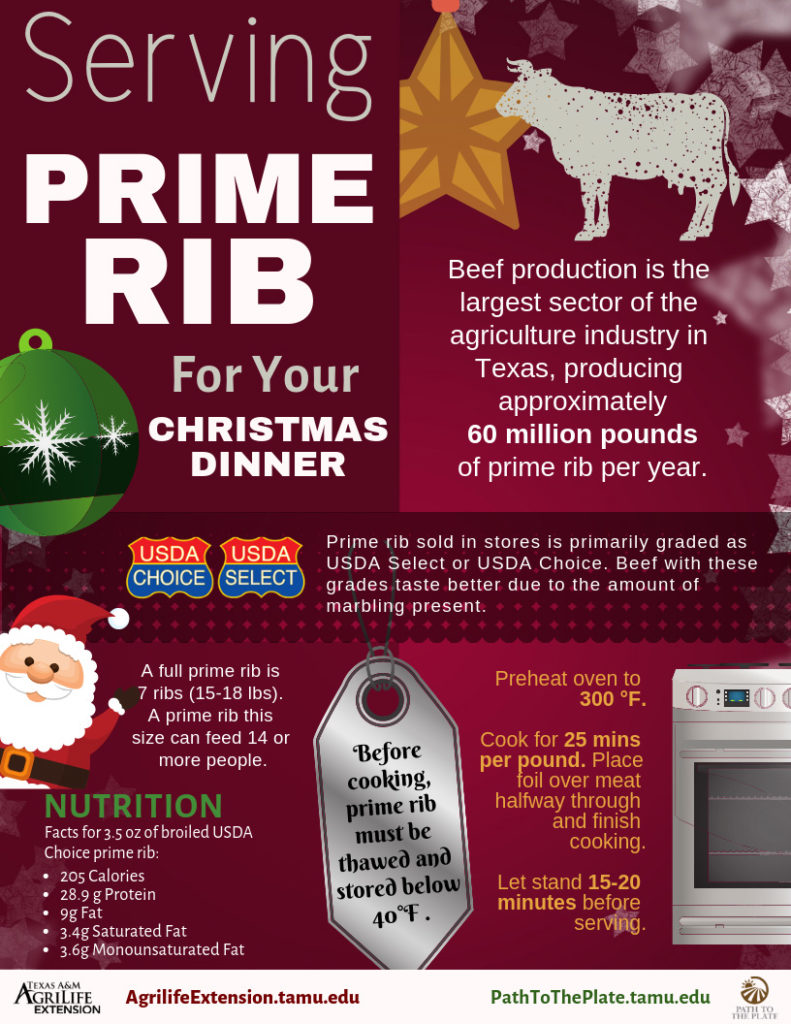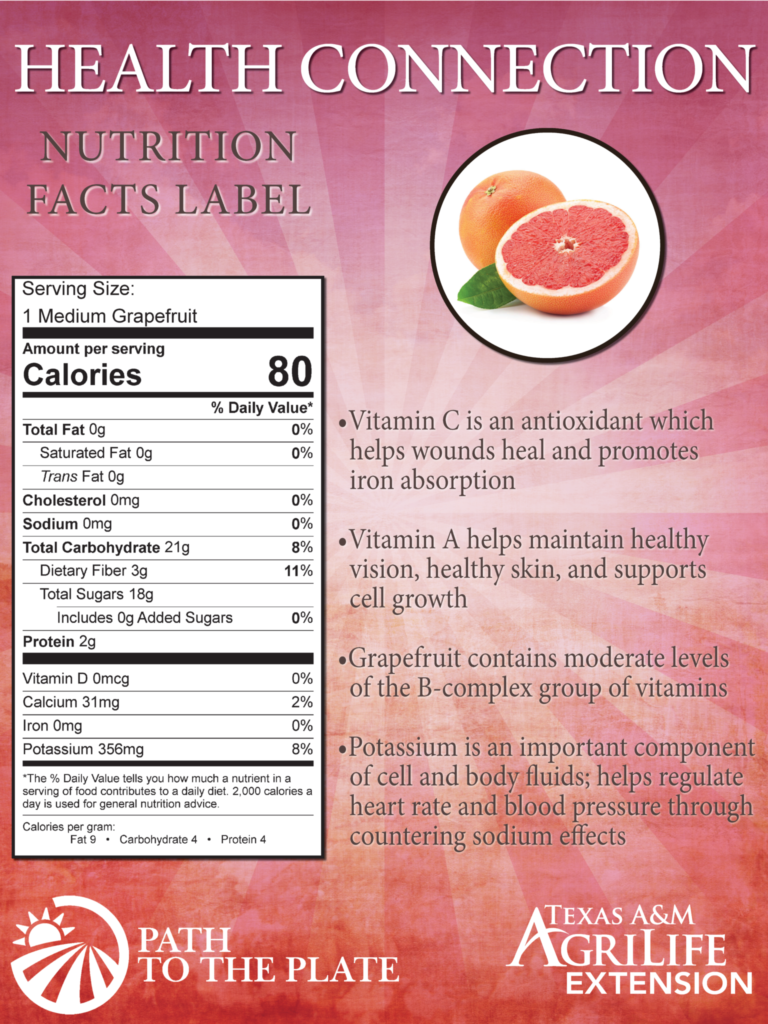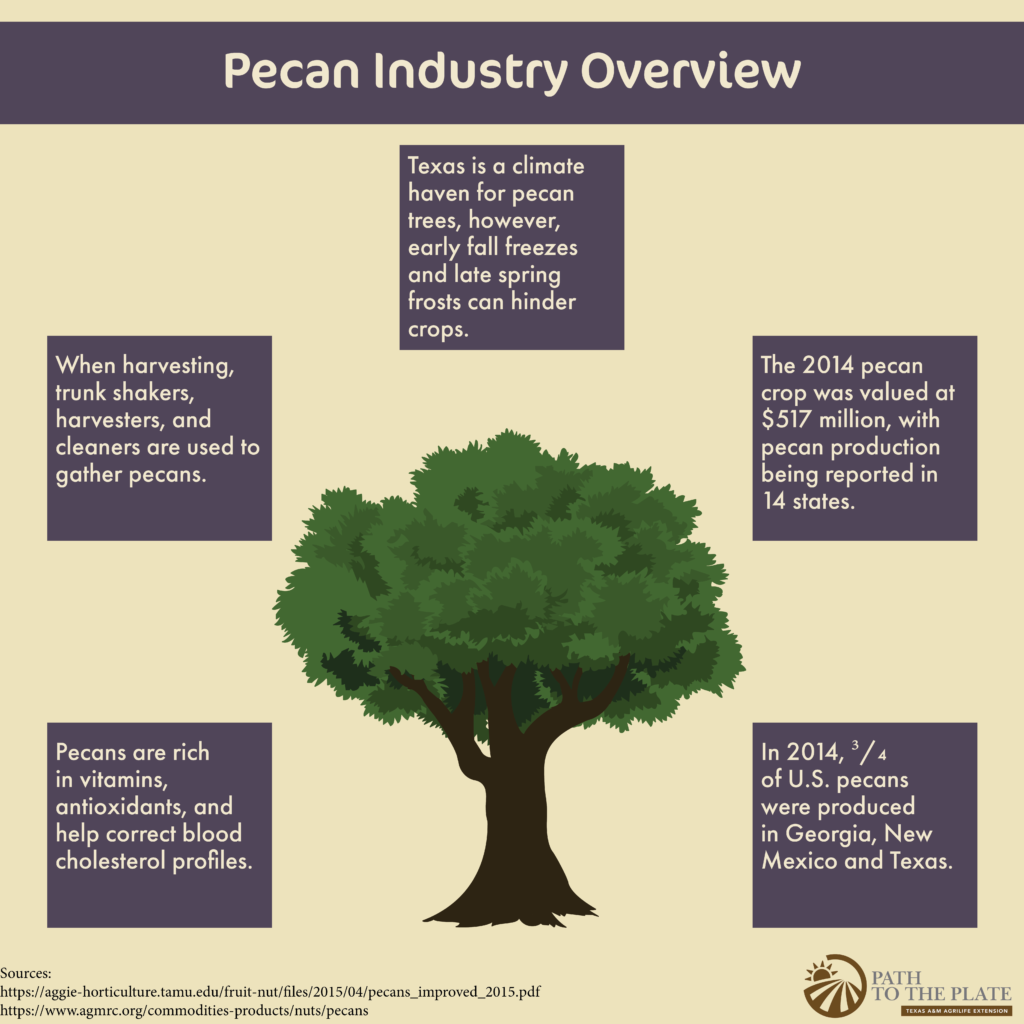There are many ways to enjoy cucumbers, including fresh or preserved as pickles. Newer varieties of cucumbers that are compact allow the vegetable to be grown in small areas.
Grow it:
Varieties: There are several varieties of cucumbers that can be grown based on the intended use.
- Slicing: Suyo, Sweet Slice, and Salad Bush
- Pickling: Carolina and Calypso
- If slicing types are picked young, they can also be used as pickling cucumbers.
Planting: Cucumber vines can reach 6 to 8 feet long!
- Cucumbers should not be planted until the danger of frost has passed and soil is warm.
- This vegetable is a vining crop that requires space. By training them on fences, trellises or cages, you can limit the amount of space required.
Fertilizing: Cucumbers need plenty of fertilizer to produce at their full capacity. Watering: If it is not raining regularly, soak plants well with water weekly. Harvesting: Timing is important when harvesting cucumbers.
- Cucumbers should be harvested when they reach the desired size and are green in color.
- If cucumbers are not harvested before they turn yellow, they are over mature and will a strong flavor.
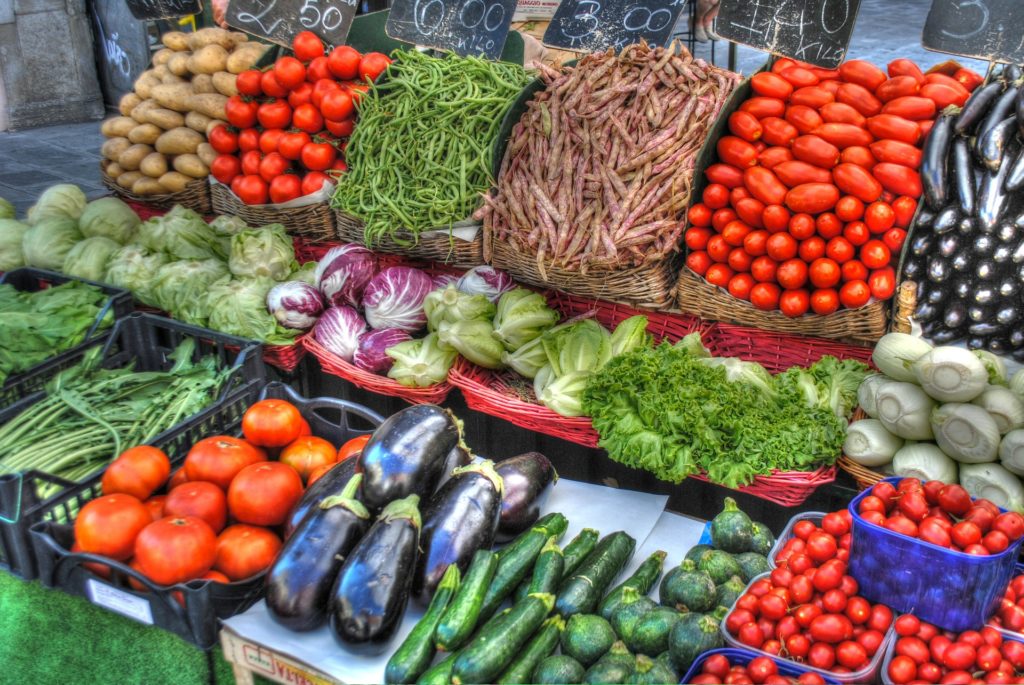
Buy it:
When buying cucumbers, check for firmness, shape and color. The vegetables should be firm and well-shaped with a dark green color.
Store it:
Cucumbers can be refrigerated in a plastic bag up to 1 week.
Use it:
Cucumbers are great as a raw snack but they can also be added into a variety of recipes! Check out the Salad in a Jar recipe below from Dinner Tonight. When building your salad in a jar remember to work upside down!
Salad in a Jar:
Dressing: Add 1-2 Tbsp of dressing to provide flavor and help you feel fuller
Non-Absorbent (Hard) Vegetables: To prevent the salad from becoming soggy, add hard veggies that will not absorb the dressing.
Absorbent (Soft) Fruit and Vegetables: To customize the flavor to your liking, load up on layers of vegetables and fruits.
Protein and Cheese: Protein is an important building block for muscles and cell regeneration, while also helping to increase our immune system.
Grains, Seeds, and Nuts: Whole grains can be added to your salad to help you feel full longer. Nuts are a good source of heart-healthy fats, protein, fiber, vitamins, and minerals.
Greens: Dark, green leafy greens offer plenty of beta-carotene and Vitamin C!
Now that your salad in a jar is complete, tighten the seal and store in the refrigerator for up to 3 days. When ready, pour out onto a plate and enjoy!
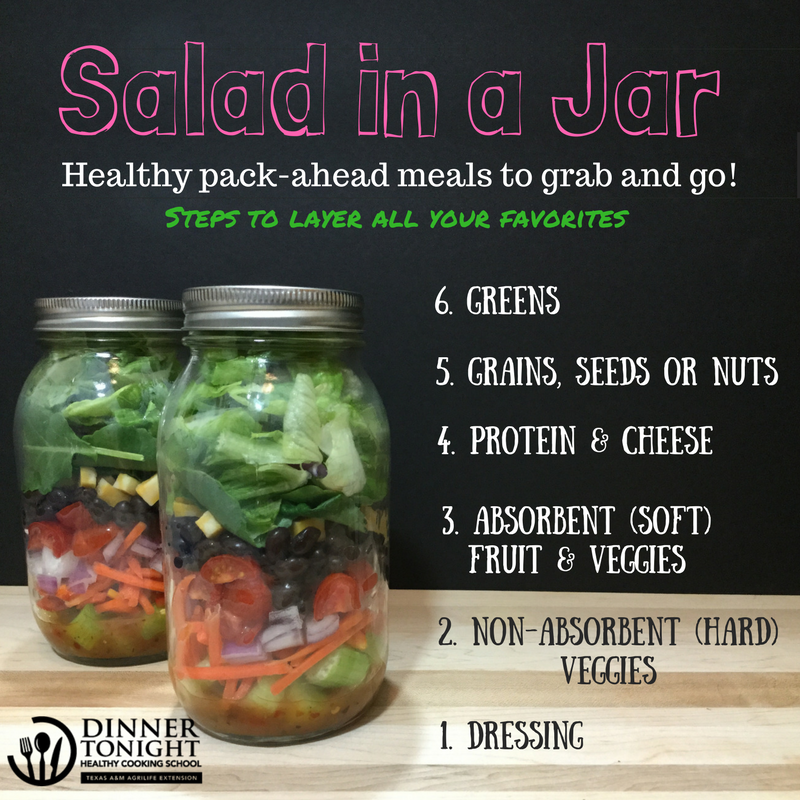
Learn more!
They are usually eaten raw, but cucumbers can be sautéed and served as a side dish. Cucumbers are also a low calorie option and a recommended source of Vitamin C. In addition, they are free of fat, saturated fat, sodium, and cholesterol.
All information gathered by Aggie Horticulture. For more information about cucumbers or other vegetables, visit Aggie Horticulture. For a downloadable version of this page, click here.
